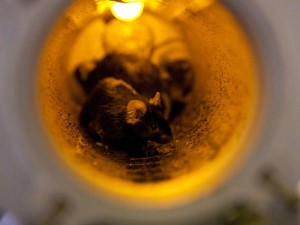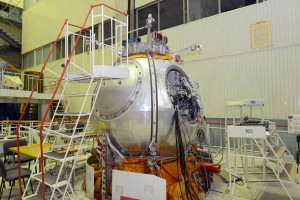On April 19, a Russian Soyuz rocket, launched from the Baikonour Cosmodrome in Kazakhstan, carried into orbit an atypical satellite – space capsule Bion-M1. This 2,450 kg space zoo is currently accommodating 45 mice, 8 gerbils, 15 geckos, and samples of plants and microorganisms. It orbits at an altitude of more than 575 kilometers and will stay in space for almost a month. On May 18, the module will be deorbited with its passengers expected to be still alive, surviving both one month in space and reentry with subsequent landing by parachutes.
The project is run by Roscosmos but involves broad international participation. Commenting on the mission, Nicole Rayl, project manager for NASA’s contribution, said: “The unique nature of this mission is that it’s a 30-day mission, so it’s longer than a lot of the other animal and biological missions we’ve flown.” The exceptional length of the mission is crucial, as the researchers seek to improve their understanding of what effects long term exposure to space environment has on living organisms. Such knowledge will be particularly important for any possible future manned missions to Mars.
For example, NASA’s study of space-induced changes of sperm motility in mice can help answer the question of whether humans will be able to procreate naturally in space. The ability to preserve a species is essential if a permanent settlement in space is to be considered.

Pre-launch – the mouse still has its feet firmly on the ground. In orbit it will be floating (Credits: Institute of Biomedical Problems of the Russian Academy of Sciences).
The animals aboard are confined inside small cylindrical metal containers in which they float in microgravity. The automated system maintains a day-night regime for them, switching the lights on and off at pre-programmed times, and dispenses food and water. The Space Safety Magazine didn’t manage to find out how exactly this feeding is carried out and how difficult it is for the animals to get proper nutrition and water intake during the space flight.
The animals are monitored 24/7 and the data are sent to Earth on a daily basis. The environmental control system keeps conditions inside the pressurized capsule stable. Temperature is maintained in the range between 22 and 25 °C and the air conditioning unit continuously removes CO2 and superfluous humidity.
Even though the animals are expected to survive the landing, researchers will eventually euthanize them to conduct post mortem analysis of their tissues and determine the effects of prolonged exposure to the space environment.
There are several advantages of not placing this type of experiment on the International Space Station (ISS). First of all, the ISS orbits at a lower altitude and is therefore better shielded from cosmic radiation by the Earth’s atmosphere. That’s good for the human crew residing there but not so for proper understanding of the full power of the radiation. Besides, some payloads could present potential contamination hazard.
Bion-M1 is a legacy of Russian biological space research program that started in the early 1960s. Roscosmos discontinued the program in the mid 1990s and subsequently, in 2005, introduced the next generation Bion. They expect to carry out three biological space missions. The first of these, the current Bion-M1, was originally expected to take off in 2010. Plans have already been announced for a mission that should place a space zoo much deeper into space.
Animals played an essential role in space exploration from the very beginning. They preceded men into orbit as researchers needed proof that the space environment is actually survivable. Among the space faring species were rats, rabbits, dogs, monkeys and higher primates. Even today, researchers believe they can’t advance in space life sciences without conducting animal-based experiments.
What do you think about sending animals to space? Leave a comment!
You can check the two following videos. The first one shows the Bion-M1 animal crew before boarding. The second displays mice struggling in microgravity during a rocket flight.
[youtube http://www.youtube.com/watch?v=ye-nB-TK0t4]
[youtube http://www.youtube.com/watch?v=qxYR_O_iX3s]





























![A trajectory analysis that used a computational fluid dynamics approach to determine the likely position and velocity histories of the foam (Credits: NASA Ref [1] p61).](https://www.spacesafetymagazine.com/wp-content/uploads/2014/05/fluid-dynamics-trajectory-analysis-50x50.jpg)



Hi Tereza,
Yes we do need animals in space to help with the science of humans in space flight. Thanks